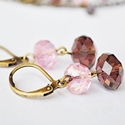The Art of Napkin Folding
Napkins have been around for centuries. Both the ancient Greeks and Romans used napkins, and no formal dinner party would be complete without providing a napkin for a guest to protect their laps and wipe their hands.
In Europe, napkins are often referred to as serviettes, but the concept remains the same. Napkins may only be a simple square piece of cloth, but presenting napkins in a decorative and aesthetically pleasing manner has become an art form all on its own.
Napkin folding can turn a simple square napkin into an elaborate and decorative ornament that will look fantastic positioned next to the cutlery, but napkin folding isn’t easy, which is why so many people opt to use napkin rings.
Similar to origami, napkin folding is particularly challenging due to the softness of the napkin material. However, by starching a napkin, you can fold it into some really lovely and elaborate shapes. Napkin folding is something you can do many hours in advance of a dinner party, while sat on a comfy chair or chaise sectional, but it does take plenty of practice.
The Pyramid
Often used by restaurants, the pyramid is perhaps the easiest shape in which to fold a napkin. To fold a napkin into a pyramid, first lay the napkin in front of you and fold it in half diagonally to make a triangle. Fold the two ends of the triangle to the center of the napkin to form a diamond shape. Next, turn the napkin over and fold it in half to form a smaller triangle. Turn the napkin over again and fold along the centerline. The result should be a neat and sturdy pyramid that can support its own weight when stood up.
The Bishop’s Hat
Another simple shape that you can fold a napkin into is the bishop’s hat. To create the bishop’s hat, first fold the napkin in half, but this time fold it to form a rectangle, not a triangle. Next, fold one corner down the centerline toward you. Then, turn the napkin over and fold the other end away from you so the napkin resembles a squashed rectangle. Turn the napkin around and fold the bottom half of the napkin away from you so the far edges run on top of each other. The next step is a little tricky, as you need to reach under the napkin and pull out the flap created by the folds on the right so it forms two points. You then need to tuck the left triangle underneath the right triangle. Then, with the points away from you, fold the right triangle into the left one. You should then have a hat shape that can be opened out to be stood up next to a place setting.
Diamond Pouch
The diamond pouch is a more complicated folded napkin, but this one creates a handy pocket in which to hold cutlery. To make a pouch, again you need to fold the napkin to form a rectangle and then fold again to form a square. Fold back one of the edges, using only one layer, so the point meets the corner of the square on the opposite side. Fold the next layer in a similar fashion just below the previous one, making sure the edges are even. Repeat this step for the next layer and then turn the napkin over. Fold the edges with all the layers over one another, and tuck one edge into the other to hold it all together. You can then insert silverware into the pouch you’ve created.
Napkin Rings
Even if you’ve followed these instructions carefully, chances are you may have not created the perfect pyramid, bishop’s hat or pouch. This is because napkin folding takes time, patience and practice. This is one reason why so many people opt to use napkin rings rather than mess about before a dinner party trying to fold napkins into shapes. Napkin rings come in many different varieties, styles and shapes that without any effort can still present napkins in an elegant and stylish manner. To complement napkin rings, wine glass charms add that little touch of elegance, which can make all the difference to a table setting, ensuring it looks good enough to entertain the fussiest of guests.

















